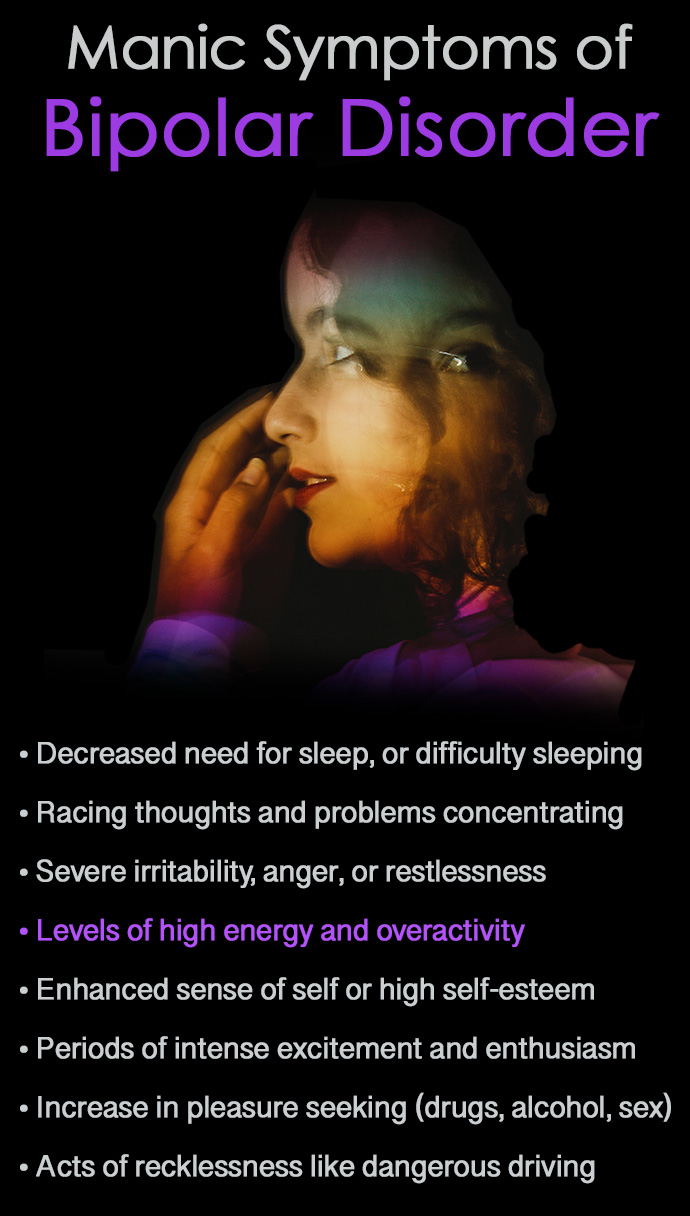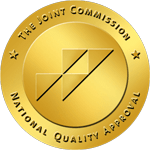Table of Contents
Changes in mood, like wavering between happy and sad, can be a normal part of life. But for people diagnosed with one of the four types of bipolar disorder, extreme shifts in mood can make living with the condition a challenge.
Even more difficult is living with the different types of bipolar disorder without a receiving a diagnosis to understand what is causing the symptoms and how to effectively treat them.
World Bipolar Day is recognized every year on March 30 to raise awareness about the disorder and reduce the stigma so more people will seek treatment.
What is Bipolar Disorder?
Bipolar Disorder is a mental health condition that affects a person’s mood, energy, and activity levels, causing episodes of severe depression as well as bouts of extreme mania.
Left untreated, the symptoms of the disorder often make carrying out day-to-day tasks difficult, if not impossible for some people.
According to the National Institute of Mental Health, nearly 4.5 percent of adults in the United States alone will struggle with bipolar disorder at one point in their lifetime.
The intensity and duration of depressive and manic episodes, as well as the length of time between these mood disturbances, are determining factors that health care professionals use to distinguish and diagnose the various types of bipolar disorder a person may be struggling with on a regular basis.
Medical professionals often can’t pinpoint an exact cause of bipolar, but risk factors usually include genetics, a family history of bipolar, and environmental issues such as stress, anxiety, or substance use.
What are the 4 Types of Bipolar?
Understanding the differences between the four types of bipolar disorder can help people, and their loved ones, spot early signs of depressive or manic episodes, employ self-care strategies to address symptoms, and reach out for help and treatment when necessary.
The Four Types of Bipolar Disorder Include:
1. Bipolar I Disorder
A Bipolar I Disorder diagnosis is characterized by manic episodes that last up to a week or longer, or mania so severe that a person needs hospitalization.
With Bipolar Type 1, a person might also battle major depression lasting two weeks or more, but this is not a requirement for a diagnosis of bipolar I.
2. Bipolar II Disorder
With Bipolar II Disorder, both depression and hypomania, a less severe form of mania that can last as long as four days, are present.
People dealing with this type of bipolar sometimes have a longer duration of normal mood than those with bipolar I.
However, the episodes of major depression symptoms can be just as long and debilitating.
3. Cyclothymic Disorder (Cyclothymia)
Cyclothymic Disorder (Cyclothymia) is a type of bipolar disorder that is characterized by cycles of mild depression and hypomania that last at least two years or more in adults and one year for children or teens.
While the symptoms of Cyclothymia are less severe than bipolar I and II, they can still make a person’s day-to-day life difficult.
4. Unspecified Bipolar Disorder
A diagnosis of Unspecified Bipolar Disorder is usually given when a person’s symptoms don’t entirely fall into the above categories, but he or she still experiences depressive, manic, or hypomanic symptoms.
In some cases, symptoms of unspecified bipolar disorder can be caused by other medical conditions, such as drug and alcohol abuse.
Bipolar I and Bipolar II are the most common forms of the disorder, with bipolar I being the most severe in terms of manic symptoms that can lead to serious problems and hospitalization.
Other Types of Bipolar Disorder
Most doctors will usually make a diagnosis that falls within one of the 4 types of bipolar disorder categories listed above, although it’s not uncommon to see it listed as something else.
Generally, a diagnosis will fit within the first three categories, and if it doesn’t, it may be listed as one of the following:
- Bipolar with Seasonal Features
- Bipolar Disorder with Mixed Features
- Bipolar with Rapid Cycling
- Bipolar Disorder Not Elsewhere Classified
- Substance-Induced Bipolar Disorder
- Bipolar Disorder Associated With Another Medical Condition
Related: Borderline Personality Disorder vs Bipolar Disorder
Symptoms of Bipolar Disorder
Most of the symptoms of bipolar disorder can usually be broken down into three categories of mania, hypomania, and depression, though it’s important to know what difficulties each of these can cause.
Manic Symptoms can include some of the following:
- Decreased need for sleep, along with difficulty getting to sleep
- Racing thoughts, problems concentrating and making decisions
- Severe irritability, anger, and restlessness
- Levels of high energy leading to periods of over-activity
- An enhanced sense of self or high self-esteem
- Periods of intense excitement and enthusiasm
- Increase in pleasure seeking behaviors such as doing drugs and alcohol or sexual activity
- Acts of recklessness, like dangerous driving behavior and risky sexual activity
Hypomanic symptoms may appear similar to the symptoms of mania, but are usually less severe, though they can still interrupt a person’s ability to make healthy decisions and create problems in a person’s life.
Depressive Symptoms can include:
- Sleep issues, such as sleeping too much or having insomnia and rarely sleeping
- General sense of fatigue, low energy, and exhaustion
- Changes in eating habits, such as a loss of appetite or overeating
- Physical aches and pains
- Problems concentrating
- Loss of interest in people, activities, and interests normally cherished
- Feelings of sadness, worthlessness, or hopelessness
- Bouts of low self-esteem
- Suicidal thoughts, ideations, and behaviors
Left untreated, the symptoms of bipolar disorder can become incredibly difficult to handle for many people. In severe cases, the symptoms may lead to debilitating anxiety and psychosis.
It’s common for some people to begin using alcohol or drugs as a way to cope with depression and other symptoms.
While this strategy may work for a short time, it will only make things worse in the long term and can lead to a dependence or addiction.
Bipolar Disorder Treatment
Treatment for all types of bipolar disorder can be very effective, although it’s important that people living with the condition continue to manage their symptoms, which can be challenging at times.
1. Prescription Medications
Mood stabilizing medications, such as lithium, can significantly help reduce the symptoms, or prevent them from reoccurring.
Other prescription medications, like antidepressants and anti-anxiety drugs, can also be helpful for managing periods of depression and mania. Benzodiazepines like Valium should only be used for a short time though.
It can be tempting for some people to get prescription medications from friends or family to treat the symptoms without seeing a doctor, but this can be dangerous and is never recommended.
2. Counseling and Therapy
Depending on the types of bipolar being treated, medications and psychotherapy are often the most effective treatment option.
Some people only require counseling and therapeutic approaches to find relief, along with changes in lifestyle.
Two popular individual treatment methods include Cognitive Behavioral Therapy (CBT) and Dialectical Behavior Therapy (DBT). These are evidence-based therapies for developing coping skills and techniques to address bipolar-related symptoms and behaviors.
Group Psychoeducation and Family-Focused Therapy can be effective for including family members and others with a patient’s treatment plan.
3. Lifestyle Changes
Lifestyle changes when used with therapy can help reduce bipolar symptoms. The most important ones are daily exercise, eating a healthy diet, and sticking to a regular sleep plan.
Practicing meditation and mindfulness will calm the mind and prevent stress and anxiety from spiraling out of control.
Avoiding drugs and alcohol are also recommended for managing the symptoms.
For people who may be prone to the various types of bipolar due to genetics or other factors, it’s possible to successfully treat the condition by recognizing the symptoms, seeking professional help, and utilizing the treatment methods described here.







